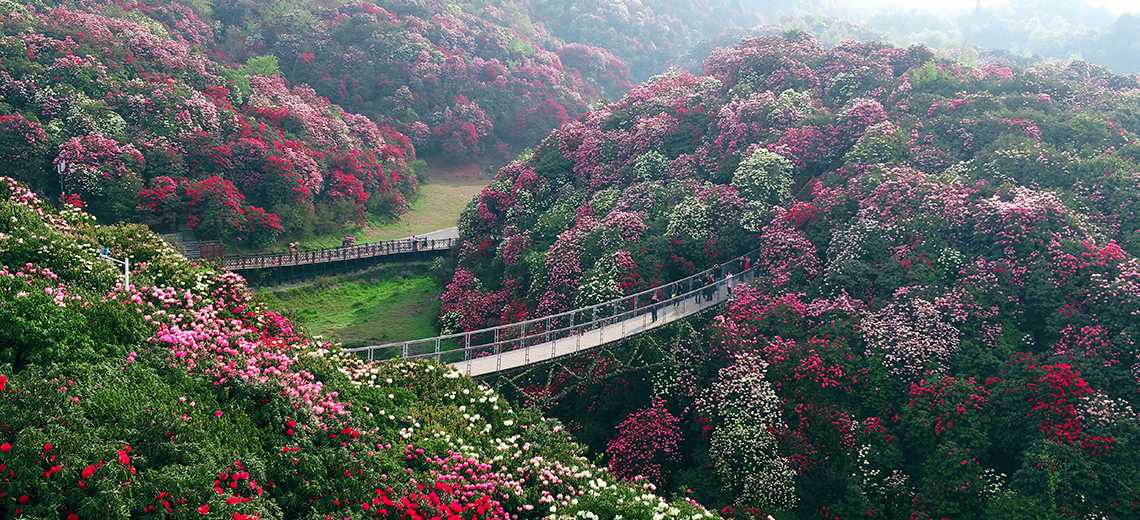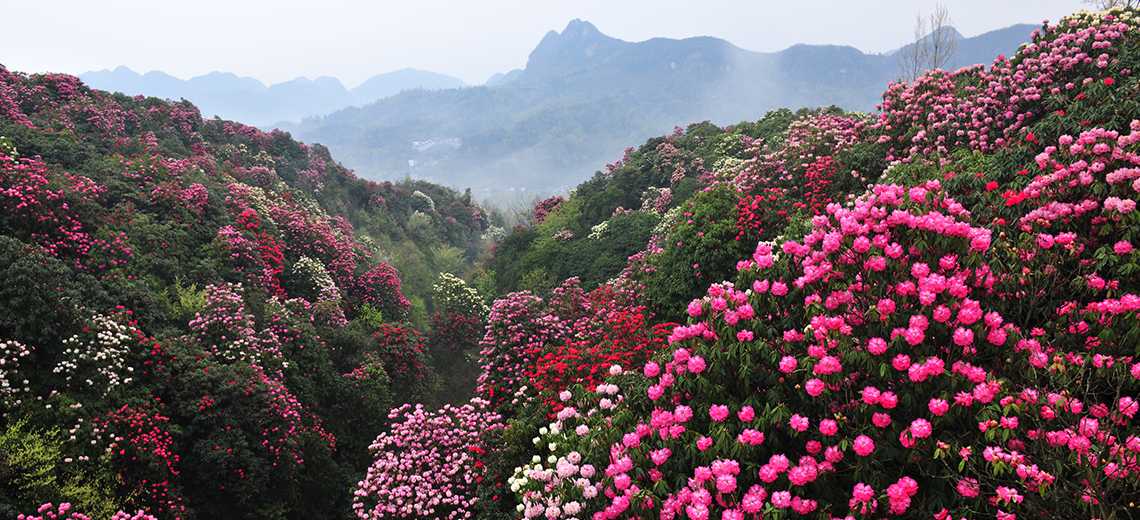Institutional information
| district: | Guizhou > Bijie |
| categorisation: | Administrative Distr > Province |
| tel: | 00-86-0857-8638410 |
| website: | Click to visit the Chinese website |
| address: | No. 518, Biyang Avenue, Qixingguan District, Bijie City |
| working hours: | Official working hours: 08:30-12:00 in the morning and 14:30-18:00 in the afternoon. |
| video: | https://www.bijie.gov.cn/masvod/public/2025/04/22/20250422_1965b44520c_r1_3200k.mp4 |
| description: | Bijie City is located in the northwestern part of Guizhou Province, at the junction of Sichuan, Yunnan, and Guizhou provinces, |
| data statistics: | 162 browse,0commentaries,0message,1Pictures,0focus |
Seller Map
详细介绍
Bijie City is located in the northwestern part of Guizhou Province, at the junction of Sichuan, Yunnan, and Guizhou provinces, and in the heart of the Wumeng Mountains, with a total area of 26,900 square kilometres. It administers eight county-level administrative divisions and one management zone, including Qixingguan District (city district), Dafang County, Qianxi City (under city administration), Jinsha County, Zhenjin County, Nayong County, Weining Yi, Hui, and Miao Autonomous County, Hezhang County, and the Bili Dujuan Management Zone (county-level). It administers 135 towns, 91 townships (72 ethnic townships and 19 non-ethnic townships), and 53 sub-districts, totaling 279 township-level administrative divisions. The city is home to 54 ethnic groups, including the Han, Yi, Miao, Bai, Hui, Bouyei, Gelao, Mongolian, and Manchu ethnic groups. In 2024, the city had a permanent population of 6.6216 million.

The responsibility and mission are unique. Bijie is the only national pilot zone themed around ‘poverty alleviation through development and ecological construction.’ In the 1980s, Bijie faced economic backwardness, ecological degradation, and population growth, leading to severe hardships for its people and a vicious cycle of ‘the poorer they became, the more children they had—the more children they had, the more land they cultivated—the more land they cultivated, the poorer they became.’ Under the close care of Comrade Xi Zhongxun, then a member of the Political Bureau of the Central Committee of the Communist Party of China and Secretary of the Central Secretariat, and under the personal advocacy of Comrade Hu Jintao, then Secretary of the Provincial Committee, the State Council approved the establishment of the Bijie Pilot Zone in June 1988. On 15 May 2014, President Xi Jinping issued an important directive on the Bijie Experimental Zone, entrusting it with the historical mission of ‘blazing a new trail for poverty-stricken areas to achieve a moderately prosperous society in all respects’ and ‘exploring new experiences in the practice of multi-party cooperation serving reform and development.’ On 18 July 2018, General Secretary Xi Jinping issued important instructions on the Bijie Experimental Zone, requiring that ‘we ensure the timely victory in the battle against poverty and strive to build a demonstration zone for implementing the new development philosophy,’ thereby endowing the experimental zone with new historical missions for reform and development in the new era, pointing the way forward, and injecting powerful momentum. From 3 to 5 February 2021, General Secretary Xi Jinping inspected Guizhou Province, with his first stop being Bijie, where he warmly greeted officials and people of all ethnic groups, bringing the special care and warm regards of the Party Central Committee to the people of Bijie.

Bijie City boasts a rich cultural heritage and a simple, traditional folkways. During the Pre-Qin period, Bijie was part of the ancient Shu Kingdom's gardens and was under the jurisdiction of the Yelang Kingdom. During the early Qin Dynasty, the Five-Foot Road was constructed within its borders, and Han Yang County and Yelang County were established, bringing the region under the central government's unified administration. During the Han Dynasty, Emperor Wu of Han dispatched Tang Meng to enter the region, opening the Yelang Road. Bijie was under the jurisdiction of Jianwei Commandery and Zangke Commandery, forming a system of both commandery and kingdom governance. During the Tang and Song Dynasties, a tributary state was established within its borders, and the Luo Clan's Ghost Kingdom emerged. During the Yuan Dynasty, the Wumeng Wusa Xuanwei Office and Yixi Buxue Xuanwei Office were established. During the Ming Dynasty, the Bijie Garrison and other ‘Western Four Garrisons’ were established, along with the Shuixi Xuanwei Office. During the Qing Dynasty, the Dading Prefecture (State) was established. After liberation, the Bijie Special Commissioner's Office was established, renamed the Bijie Regional Administrative Office in 1978, and converted into a city in December 2011. Within its borders lies the Guanyin Cave Palaeolithic Cultural Site, known as ‘the Zhoukoudian of the North and the Guanyin Cave of the South,’ as well as the Kele Site, the Shaxiang Museum, and the Yi Ethnic Group Datuang Tusi Mansion, all national key cultural relics protection units, showcasing the historical traces of ancient humans, the mystery of the ancient Yelang Kingdom, and the splendour of the Shuixi culture; Notable historical figures include Shaxiang, the Yi ethnic group heroine who bravely established the Nine Post Stations during the early Ming Dynasty; Ding Baozhen and Li Shijie, prominent officials of the Qing Dynasty who dedicated themselves to the nation and its people; and in January to April 1935, the Central Red Army fought in Bijie, crossing the Wujiang River in the southern part of Jinsha County, with the ‘Strategic Cavalry’ Red Ninth Army Corps roaming the northwestern part of Guizhou Province. In February 1936, the Red Second and Red Sixth Armies established the Northwest Guizhou Revolutionary Base in Bijie and formed the Revolutionary Committee of the Sichuan-Yunnan-Guizhou Province of the Chinese Soviet Republic. Revolutionary martyrs such as Xia Xi, Qian Zhuangfei, and Wu Zhengqing, along with many Red Army soldiers, shed their blood and rest eternally here. Over 5,000 passionate young people from Bijie eagerly joined the Red Army.

Rich ethnic cultural traditions. Bijie City's multi-ethnic population has fostered a wealth of ethnic cultural traditions. Folk activities such as the Yi ethnic group's Torch Festival, the Miao ethnic group's Flower Dance Festival, and the Bai ethnic group's Mountain Song Festival are unique in their own way. Ethnic crafts such as Miao wax printing and Yi paper cutting are simple and elegant. Several folk customs have been included in the National List of Intangible Cultural Heritage Protection. The Yi ethnic group's ancient play ‘Cuotai Ji’ was approved by the State Council and included in the first batch of the national intangible cultural heritage list, and is hailed as the ‘living fossil of drama.’ The Yi ethnic group's dance ‘Bell Dance’ was announced by the State Council as part of the second batch of national intangible cultural heritage, and the Miao ethnic group's dance ‘Rolling Mountain Pearls’ was announced by the State Council as part of the first batch of national intangible cultural heritage, winning multiple international awards for ethnic folk dance.
The region is rich in energy resources. The climate is cool and pleasant, with an annual average temperature of 13.4°C and an average summer temperature of 21°C, making it a ‘natural air-conditioned oasis’ bestowed by nature. The region is also abundant in mineral resources, with over 60 types of minerals discovered, and 42 types with confirmed reserves and mining potential. Among these, coal, iron, copper, lead, zinc, and rare earth reserves rank first in the province. Coal reserves amount to 325.53 billion tonnes, accounting for 40.70% of the province's total reserves, earning it the reputation of the ‘Southwest Coal Sea’; Hydropower resources are abundant, with an annual average precipitation of 849–1,399 millimetres, and total surface water resources of 134.87 billion cubic metres. The rivers within the city belong to the Yangtze River and Pearl River systems, with a total flow of 128.2 billion cubic metres; Tourism resources are unique, with two national 5A-rated scenic areas and 11 4A-rated scenic areas. It is renowned as the ‘Hometown of Chinese High-Altitude Ecological Organic Tea,’ ‘Hometown of Chinese Bamboo Mushrooms,’ ‘Hometown of Chinese Tianma,’ and ‘Hometown of Chinese Walnuts.’
The city has a significant geographical advantage. In 2024, the total length of highways in the city was 36,689.94 kilometres, an increase of 0.1% from the end of the previous year. Among these, the total length of expressways was 1,171.78 kilometres (excluding the Feixiong Airport Expressway), remaining unchanged from the previous year. Expressways such as the Hangzhou-Ruili, Xiamen-Chengdu, Chizhou-Wangcheng, and Duxiang expressways pass through the city, ensuring that all counties are connected by expressways.
Living standards continue to improve. In 2024, the gross enrolment rate for three years of preschool education was 94.08%, the enrolment rate for primary school-aged children was 99.87%, the gross enrolment rate for junior high school was 115.69%, the gross enrolment rate for senior high school was 94.24%, and the retention rate for nine years of compulsory education was 96.9%. The healthcare sector has made significant progress. The city's urban employee basic old-age insurance coverage reached 700,800 people, an increase of 3.91% from the previous year. Unemployment insurance coverage reached 357,000 people, an increase of 3.09%. Work-related injury insurance coverage reached 858,000 people, an increase of 5.95%. The ecological environment has continued to improve. The total treatment capacity of sewage treatment plants in counties and above reached 475,400 tonnes per day, an increase of 8.5% from the previous year; the sewage treatment rate reached 98.46%, an increase of 0.07 percentage points over the previous year; the proportion of days with good air quality in cities at the county level and above reached 99.3%; the harmless treatment rate of urban (county-level) domestic waste reached 100%; and the water quality compliance rate of centralized drinking water sources in counties and above reached 100%.
In 2024, the city's regional gross domestic product (GDP) reached 245.759 billion yuan, an increase of 4.3% over the previous year. Among these, the added value of the primary industry was 56.644 billion yuan, an increase of 3.6% over the previous year, accounting for 23.0% of the regional GDP; the added value of the secondary industry was 64.786 billion yuan, an increase of 6.0% over the previous year, accounting for 26.4% of the regional GDP; the added value of the tertiary industry was 124.33 billion yuan, up 3.7%, accounting for 50.6% of the GDP. The per capita GDP for the year was 36,809 yuan, an increase of 5.8% over the previous year.
